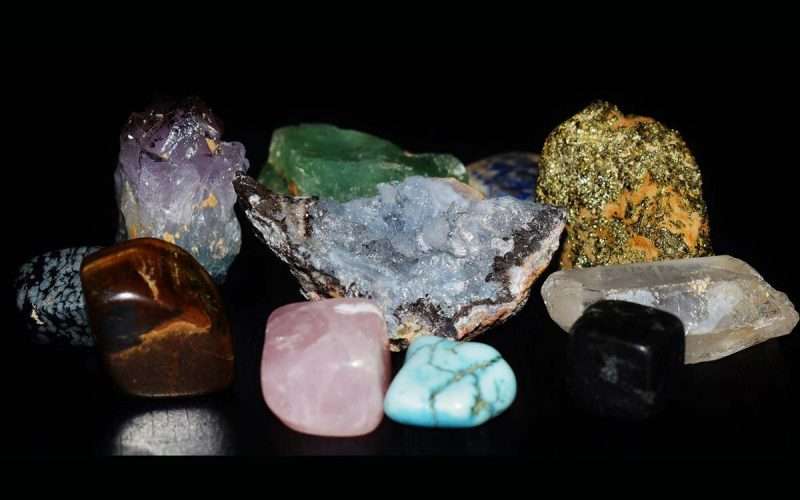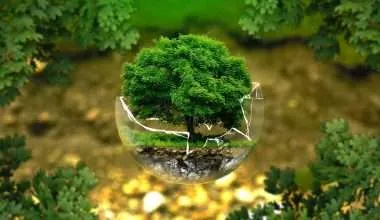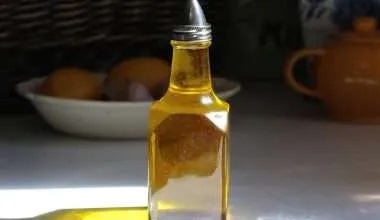Table of Contents Show
Geodes Crystals: Ordinary Outside, Amazing Inside
Geodes are like Easter eggs. How, you ask? Well, unless you are the one actually packing them up, you never know until you open an Easter egg, just what is inside of it. And that is the exact case with geode rocks also.
What are Geodes?
One of nature’s more beautiful surprises to man, geode rocks are hollow rocks, lined with a layer of sparkling crystals on the inside… Also known as crystal geodes.
The nondescript looking rocks are often easy to overlook however, once you crack open the rock, you would be able to see the lining of crystals inside of it… and viola! Here is my Easter egg analogy coming true.
For the most part, these are subspherical or spherical rocks that have an internal cavity lined with mineral substances. The outer wall is more durable and prone to weathering, a quality that helps ensure the survival of the geode. The more mesmerizing crystals within the rock remain safe in this way.
Within the rock is an underlining of agate; both white and gray in color. Over this is the more spectacular, crystal lining that the geode is famous for. This could include linings of purple amethyst crystal, white calcite, or other colorfully-banded agate.
Then again, an even rarer occurrence would be finding a lining of blue, silica gem crystals, pink colored rhodochrosite crystals, vividly colored opal or other rare materials. The size of geode rocks shows as much variety as the colors do.
Rock sizes can go as small as one centimeter to as big as several meters in length. What’s more, none of these rocks have a very specialized appearance. It is only when they are cracked open that the magic begins.
Of course, because of this Easter egg surprise kind of idea that geode rocks seem to naturally represent, geodes are a huge favorite with the masses.
That’s why, even people who have no proper knowledge of geodes are interested in getting their personal rock and discovering the treasures within. The crystals found inside are used as jewelry, to make items of office or home décor, and even as a mere, artistic curiosity.
You could even fulfill that curiosity by using the following kit by National Geographic! It has 10 different kinds of geodes and makes for an amazing experiment to teach kids as well.
Types of Geodes
There are lots of geodes discovered around the world. All of them are unique and mesmerizing in their own way!
1. Volcanic Geodes
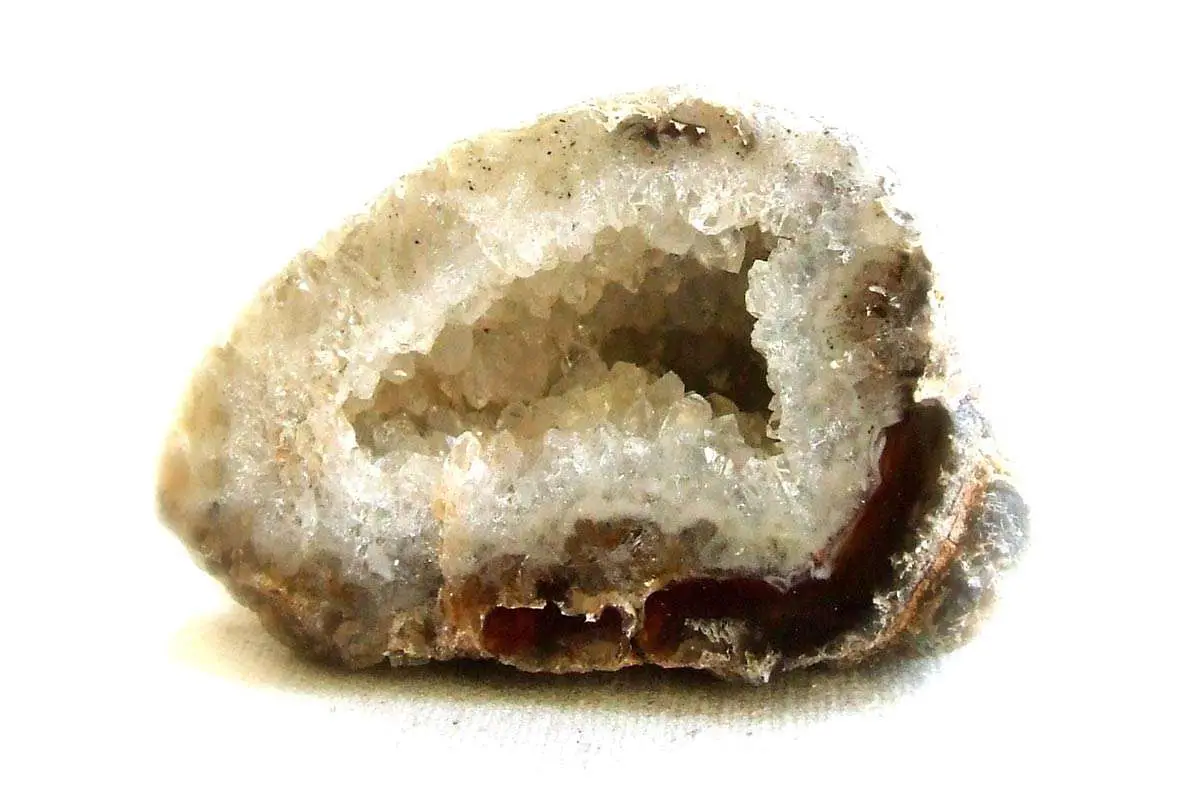
Volcanic geodes, which occur as a result of volcanic ash and eruptions, are the most well-known and sought-after geodes. Magma erupting from volcanoes has a substantial volume of dissolved gas with an incredibly high pressure.
As the lava rises to the surface, the gas expands in proportion to the decrease in pressure, and while the majority of it escapes, some becomes trapped in the lava.
This causes a hollow cavity or gaps to form. Similar gaps are also formed when liquid lava flows out of the partially hardened one, resulting in the formation of miniature lava tubes.
Hydrothermal fluids or groundwater erodes and transports minerals such as opal, agate, quartz crystal, and others to the voids of hardened basaltic lava flows. These mineral deposits in lengthy lava tubes and volcanic rocks grow over time to become some of the world’s largest and longest geodes.
Many of them have the geometry of long tree branches, with a one meter diameter and a length of several meters.
Many of today’s cathedral geodes are lava tube branches that were later packed with deposits of dissolved minerals.
2. Sedimentary Geodes
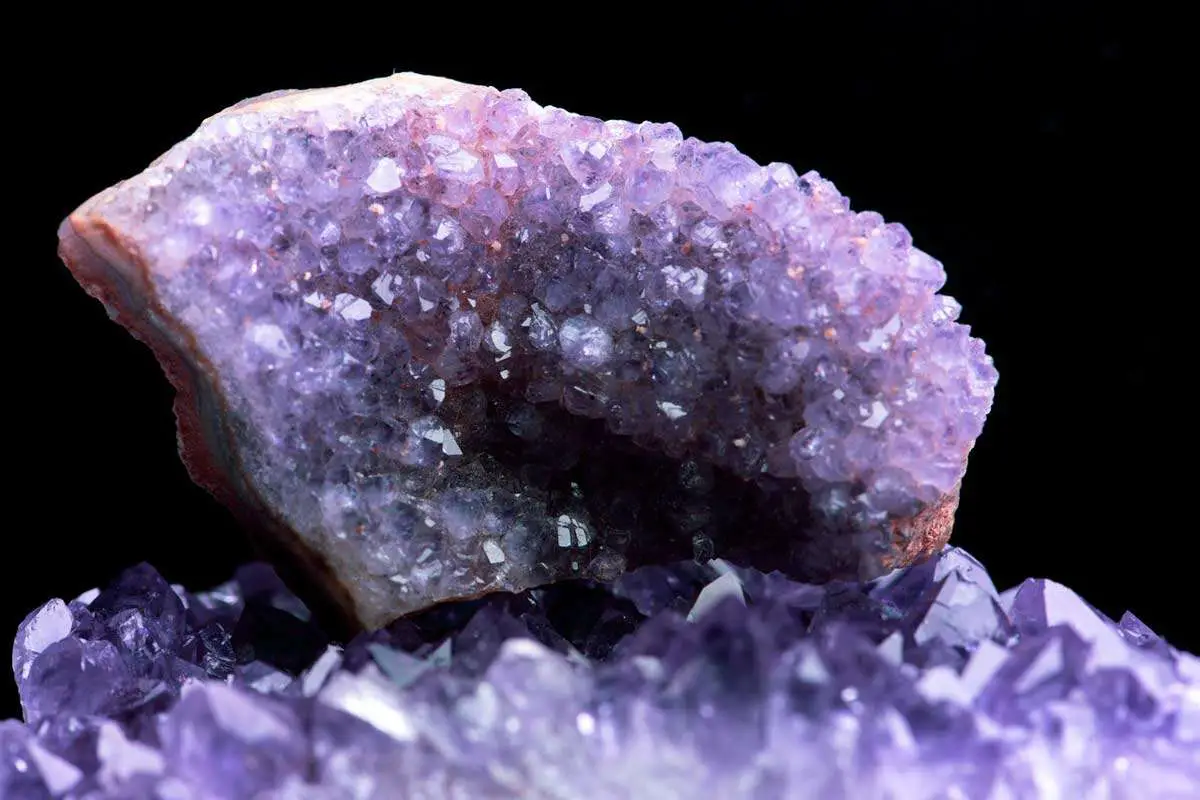
Dolomites, limestone, and calcareous shale are common locations for sedimentary geodes. As roots, shells, tree branches, and other biological stuff decompose, voids form.
Gas fills these holes, which are eventually coated with minerals such as agate, clear quartz, opal, or carbonate materials, allowing sedimentary geode formation to develop.
These sedimentary formations of geodes are smaller in size than their volcanic counterparts. When the host rock is eroded away, these geodes are easily found.
The host rock is often made of limestone, dolomites, basalt, and shale, which weather readily and transport the outer layer of quartz, chalcedony, or other geode-forming minerals.
3. Amethyst Geodes
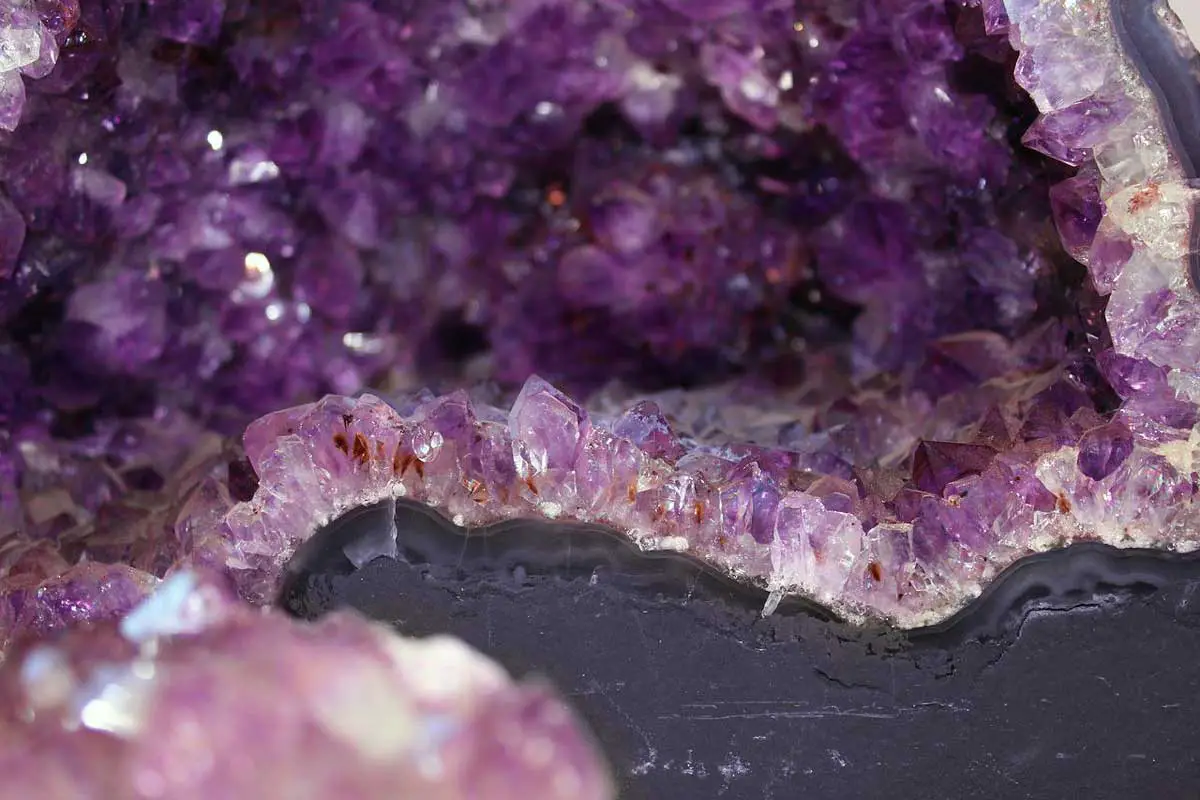
The amethyst geode is filled with amethysts, a prized gemstone. The term amethyst is derived from the Greek word ‘amethystos,’ which literally means ‘not inebriated.’ This is because the ancient Greeks and Romans thought the gemstone could cure alcoholism.
As a result, amethysts were inserted in goblets throughout ancient Roman history. Furthermore, amethyst was formerly known as the ‘Stone of Mind,’ with the ability to soothe your emotions as well as quiet your mind.
It was also said to improve your mental condition by giving you the willpower and strength to follow your hobbies and aspirations while also keeping you away from bad habits.
Furthermore, amethyst was thought to have properties that could benefit your overall health, such as stabilizing your metabolism, improving tissue rejuvenation stimulation. It also increased the production of red corpuscles in your body, strengthening the immune system, and treating other disorders such as fluctuating blood sugar levels.
They are often discovered in the form of hundreds of smaller crystals in massive and cavernous geodes known as cathedral geodes. Amethyst’s hue ranges from light violet pink to deep purple and may have clouding, making each gemstone unique.
Even today, amethyst is said to boost the energies of the crown chakra, which governs your knowledge, universality, and transcendence. Many individuals keep the gemstone in their study area to strengthen their chakra abilities.
Furthermore, the amethyst gemstone is often employed in the creation of opulent jewelry as well as daily objects such as showpieces. They are also available in clusters; little tumbling stones, and bigger faceted stones.
They are said to be great for Feng Shui decoration. Feng Shui is a Chinese concept that relates the direction, design, and arrangement of home décor objects to the movement of energy. This is thought to have far-reaching consequences, both positive and negative.
4. Quartz Geodes
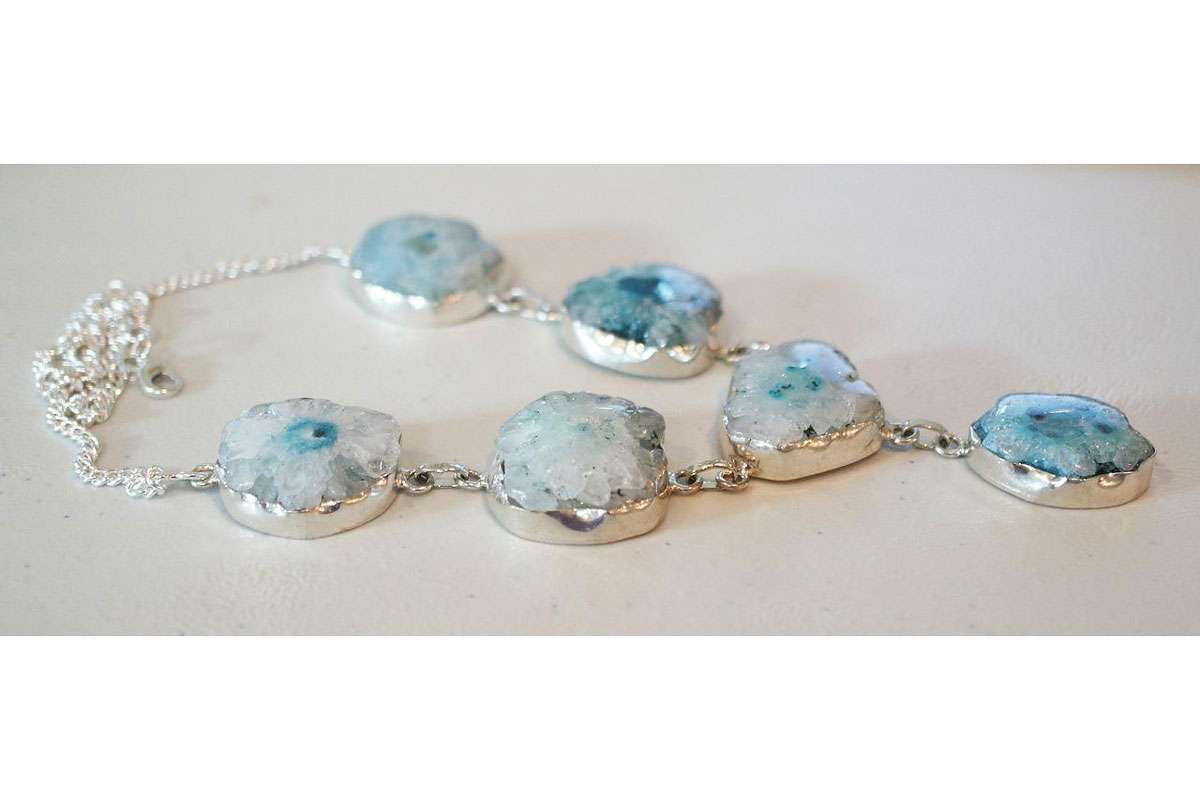
A geode is a hollow rock, lined with spherical rock material that are frequently paired with quartz crystals. The most well-known type of geode is the quartz geode. This is visible in white or milky white. Quartz can be pale yellow to peach in color on the exterior, with dazzling crystals filling the inside. It’s also referred to as a cleansing and revitalizing stone.
It is an amazing gemstone due to its brilliance, color, and diaphaneity. It is not only robust and durable, but can also take a dazzling polish. Rose quartz, aventurine, jasper, and smokey quartz are some other popular quartz gemstones.
The greatest example of quartz used as a gemstone is jasper beads. When the quartz geode emerges in clear and opaque hues, many people view it as a feng shui marker that aids in the movement of energy in living beings.
Quartz crystals are capable of vibrating at specific frequencies. As a result, they are utilized to make exceedingly accurate time-keeping gadgets and equipment capable of transmitting television and radio transmissions at exact and steady frequencies. Another use of quartz crystals in producing ultrasounds used in medical imaging.
Clocks, TVs, computers, electronic meters, watches, radios, electronic games, mobile phones, ultrasound machines, and GPS devices all employ these small instruments known as ‘crystal oscillators.’
Aside from that, quartz’s exceptional heat resistance makes it incredibly important for electronics. Optical-grade quartz crystals are employed in the production of the world’s most advanced electrical products. They are utilized in the manufacture of windows, filters, and lenses for telescopes, lasers, microscopes, electronic sensors, and other scientific instruments.
5. Citrine Geodes
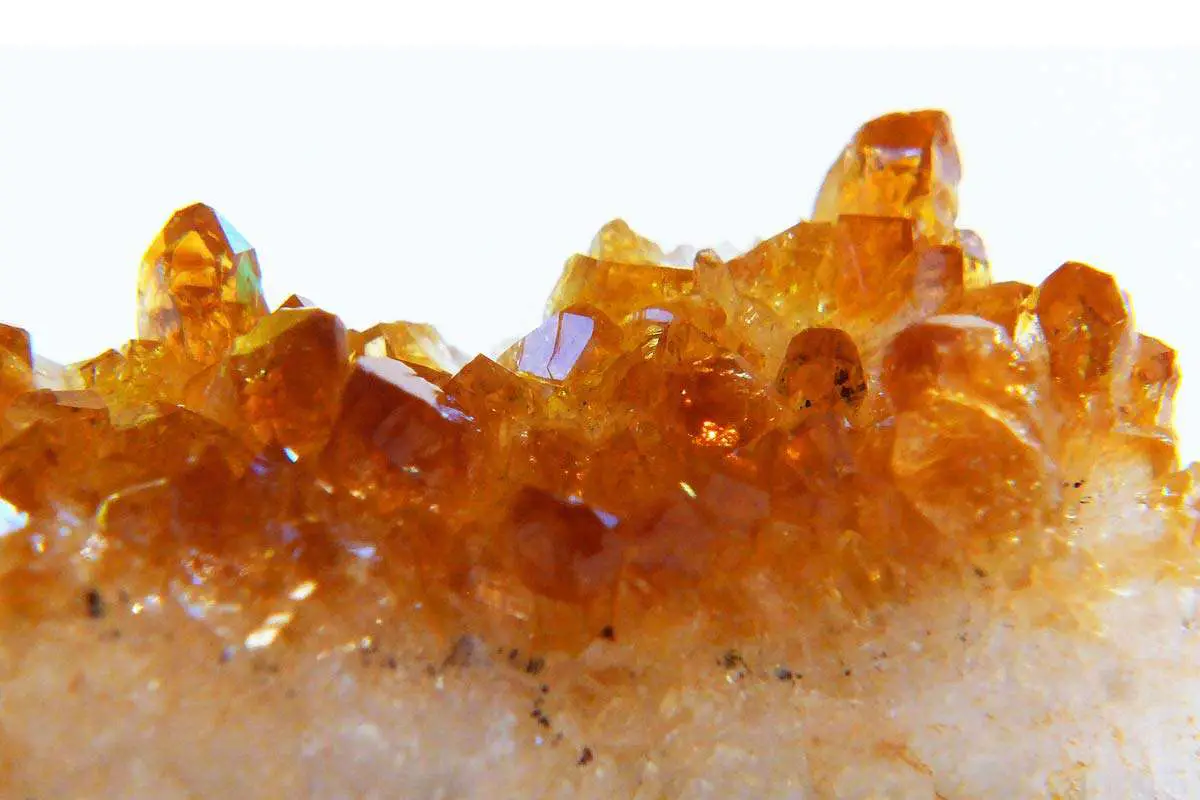
Citrine Geodes are golden geodes with a sun-like radiance that are closely related to the spiritual parts of our existence. They produce good energy, replace the gloom in our life with brightness, and are said to make us happy.
Citrine geodes are also linked to solar plexus energy. This means that it boosts our self-esteem and personal strength. We feel more lively and vibrant after using this geode.
It enables us to overcome our shyness and stop worrying about what others think. We feel an inner glow that leads us to believe that we are happy when we trust our inner power.
Citrine, like several other geodes, has a strong connection to Feng Shui, the concept of designing that promotes positive energy in our living places. Citrine is ideally put in the southeast section of residences or affluent places to make the most of it. It enhances our life by implying good aspects of riches, success, and plenty.
Placing a citrine geode next to you during meditation is one of the greatest ways to use it. This will allow you to harness the power of the solar plexus. Sit close to it if you are feeling sad or depressed to absorb the positive energy.
Place the citrine geode in your kitchen or dining room to support healthy digestion. If you workout near the geode, you will experience increased physical energy. Similarly, placing it in your office may boost your enthusiasm and inspiration.
6. Calcite Geodes
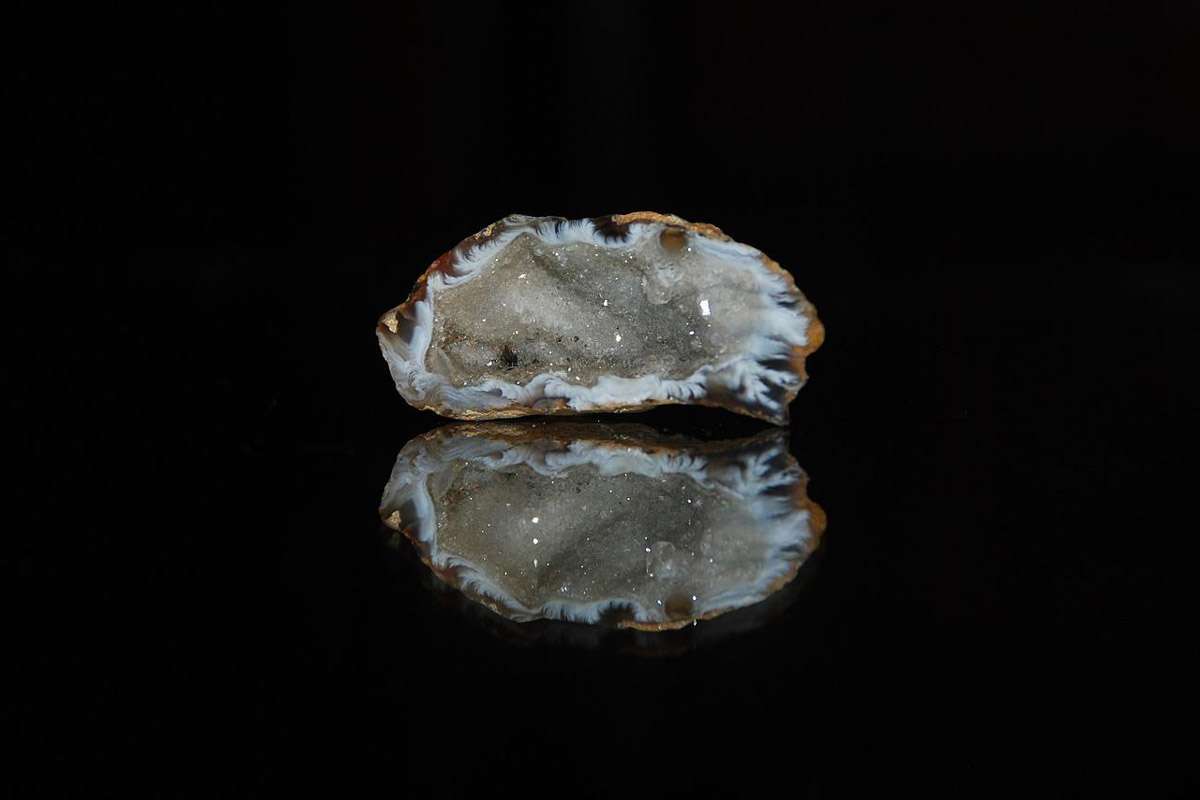
Calcite geodes contain deposits of calcite, one of the most potent healing stones. It is the most common mineral in Indiana. It is the most abundant mineral in Indiana geode, made of the host rock limestone, which is Indiana’s state stone. Calcite crystals are found in dolostone, which includes 50% of the mineral dolomite.
Calcite crystals act as effective energy amplifiers in houses, increasing the energy levels in the area. The crystal’s energy cleaning and purifying abilities encourage the flow of positive energy throughout the environment.
Calcite crystals provide renewing, relaxing vibrations that clear any obstructions in energy pathways. White calcite is the most effective calcite crystal and the most potent generator of energy among them.
7. Agate Geode Eggs
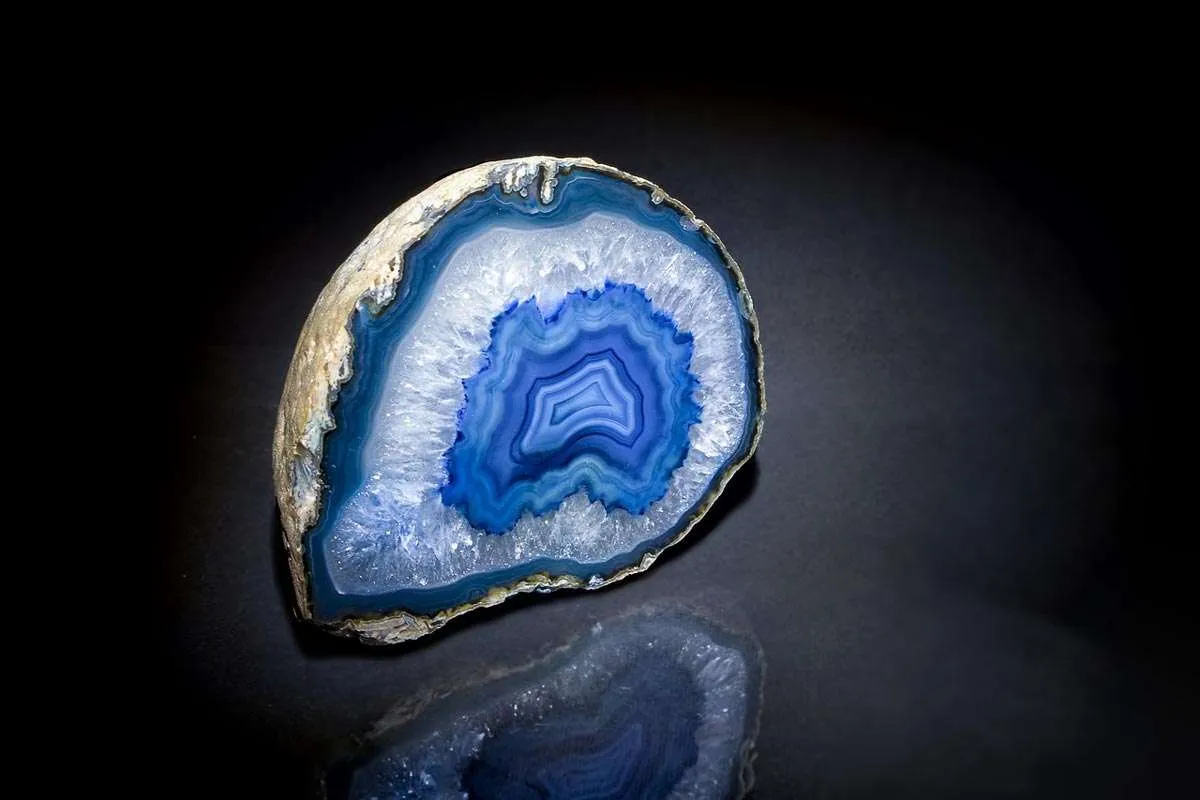
Another remarkable form of geode may be seen in agate eggs, which are widely discovered in Brazil. These egg-shaped geodes are stunning whether viewed in banded or lacy agate colors. They possess a dazzling power that provides enormous magical healing. The layers of agate and sparkling crystalline formations surrounding the geode’s main spectacular contain its latent aesthetic power.
The agate geode egg has two powers, healing and truth, which combine to create a great force, making the geodes incredibly important additions to any collection. Layers of agates of various hues hold little snowflake-like crystals when seen closely.
Agate geodes, more than any other form of geode, have the capacity to encourage creative mental processes. They encourage sincere intentions and affection, as well as the crystallization of ideals and ideas (examining, healing, and focusing abilities).
They create an aura of genuine healing harmony in any location or individual. Agate geodes can be utilized as a contemplative focus point or just as a decorative item.
Understanding the phenomenon inside geodes
Imagine pulling crystals out of rocks. If this sounds like a fantasy, you couldn’t be more wrong. It is the speciality of geode in a nutshell. Geode rocks are like a hollow bubble, and on the inside they are lined with what appear to be a layer of sparkling, geode crystal.
One of the reasons though, why this is not a better known rock, is because the non descript exterior of this rock often leads viewers to pay little to no attention to a geode rock. However, cracking the unopened geode rock, once opened will show an entirely different picture.
Once open, geode rocks will display a wide array of colorful crystals. However, it is important to understand how to properly open a Geode rock. Working with a sledgehammer is out of the question. Rocks are opened using sharp blades and specialized instruments.
Where are geodes found?
Geodes occur naturally in many parts of the world. Due to their popularity, they have helped give rise to profitable industries that not ‘mine’ the geode rocks, but also ship them to non geode localities across the world. Here customers purchase them as works of science, art or for the pure joy of looking at them.
Uruguay, Namibia, Mexico and Brazil are four countries where the geode industry is now a thriving one. And it is all thanks to the geodes formed through sedimentary rock deposits, volcanic rock deposits, igneous rock deposits, mineral matter or crystal caves present here.
The interest that potential customers have in geodes may be gauged from how rapidly geode products sell and any Gem and Mineral Shows, Rock shops or Science Museums and Art Galleries.
Likewise, geode opening demonstrations feel more like a circus act; drawing huge crowds, and loud cheers. As a geode rock is cut open to reveal the beauty of say, a chalcedony specimen inside the crowd erupts into cheers. The beautiful specimen of chalcedony seems to deserve it!
Another surprising fact about geodes is that many a crystal formation can occur in large numbers, even within a single rock unit. For instance, given the right conditions, a smooth basalt rock may have many crystals, such as plenty of amethyst crystals within it.
All in all, the beauty of these rocks has fascinated people for many years past, and there is no doubt that they will continue to enchant us long into the future.
